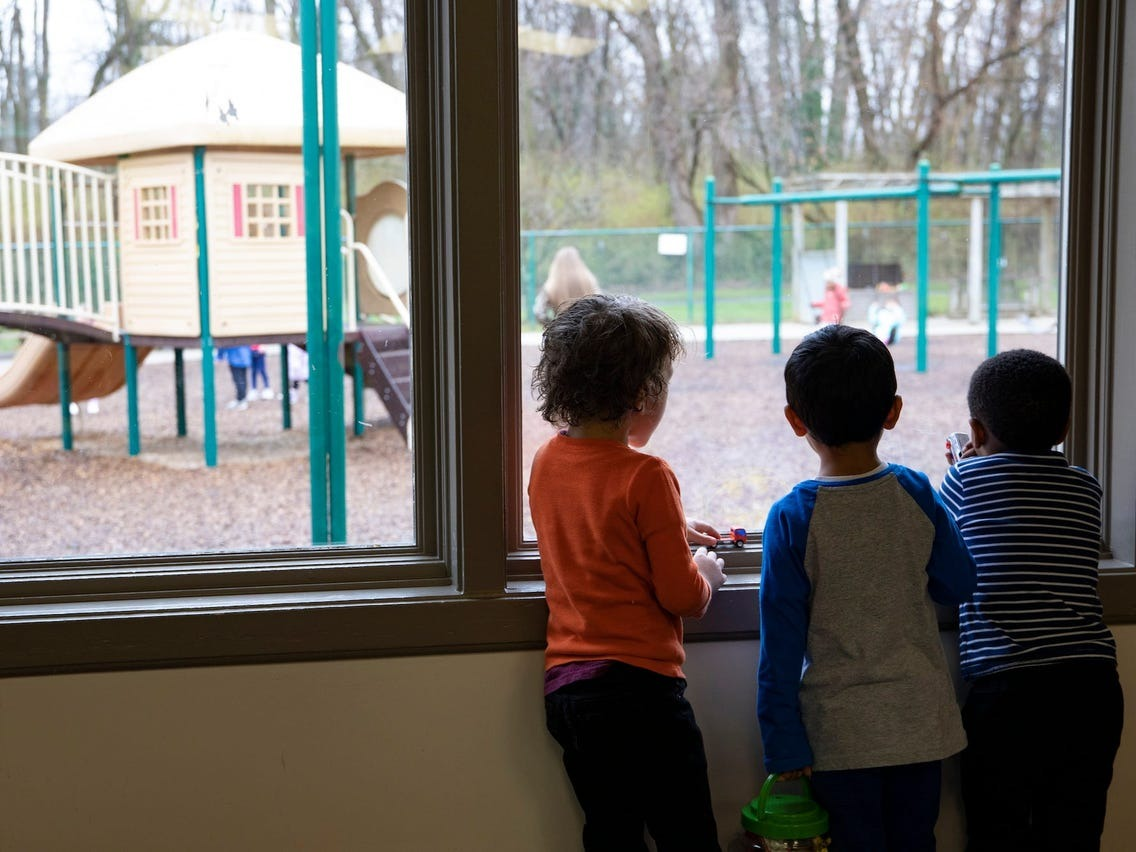
In today’s fast-paced world, juggling work and family life is a high-wire act that leaves many of us breathless. But what happens when the safety net below—our childcare system—starts to fray? The childcare crisis is not just a buzzword; it’s a reality affecting our society’s fabric. This article aims to shed light on the complexities of this crisis, its long-term implications, and the role that governments and leaders can play in finding sustainable solutions.
What’s Behind the Child Care Crisis?
The term “childcare crisis” might sound like an exaggeration, but the numbers tell a different story. With care costs skyrocketing, many families find themselves in a financial bind. Conversely, childcare workers, the backbone of this industry, often need to be paid more, leading to high turnover rates and lower quality of care1. The situation is so dire that up to 70,000 childcare centers are at risk of closing their doors for good. This isn’t just a problem; it’s an emergency that requires immediate attention.

The Long-Term Threats Posed to Families and Children
The ripple effects of the childcare crisis go beyond just the here and now. A lack of reliable and quality childcare can affect a child’s development, affecting their educational achievements and emotional well-being. Moreover, the crisis disproportionately impacts women, pushing them out of the workforce and perpetuating gender inequality. The long-term societal costs could be enormous, affecting not just individual families but communities.
How State and Federal Governments Could Help
The question on everyone’s mind is, “Who’s going to fix this?” The answer is complex, but it’s clear that both state and federal governments have a role to play. However, these solutions must be more than just quick fixes but sustainable changes that address the root causes of the crisis.
Subsidizing Childcare Costs
One of the most immediate ways governments can intervene is by subsidizing childcare costs. Programs offering financial assistance to families can make a difference, allowing parents to work without the crippling worry of exorbitant childcare fees. However, subsidies alone won’t solve the problem; they must be part of a broader strategy.
Improving Worker Conditions
Child care workers are often underpaid and overworked, leading to high turnover rates and, consequently, lower quality of care. Governments can set minimum wage standards for the childcare industry and offer incentives like healthcare benefits and professional development opportunities.
Innovative Care Models
Beyond traditional daycare centers, governments can invest in innovative childcare models. For example, public-private partnerships could lead to employer-sponsored childcare facilities, making it easier for parents to balance work and family life. Community-based solutions like neighborhood childcare co-ops could receive governmental support and funding.
Regulatory Oversight
Ensuring the quality and safety of child care centers is paramount. State and federal agencies can enforce stricter regulations and regular inspections. This ensures children are in a safe environment and gives parents peace of mind.
Long-Term Sustainability
While immediate actions are necessary, governments must also think long-term. Any policies or programs introduced should be sustainable and scalable. This means not just throwing money at the problem but conducting thorough research and planning to ensure solutions are effective in the long run.
Leaders Should Say Which Problem They Are Trying to Fix
Transparency is critical when solving complex issues like the childcare crisis. Leaders need to be explicit about what they’re aiming to fix. Is it the high cost of care, the low wages for workers, or the lack of availability? By clearly defining the problem, we can work towards targeted solutions that have a lasting impact.

The Trade-Offs of Contemporary Childcare Proposals
Finding a solution to the childcare crisis is like walking a tightrope. Every proposal comes with its own set of trade-offs. For example, making childcare more affordable might compromise the quality of care. Similarly, improving worker conditions could lead to higher costs for parents. It’s a delicate balancing act that requires thoughtful consideration of all the pros and cons.

Practical Advice for Navigating the Financial Maze of Childcare
Explore Tax Credits and Subsidies
First and foremost, look into childcare tax credits and subsidies that might be available in your area. These financial aids can offer some much-needed relief and make childcare more affordable.
Consider a Childcare Co-op
Another option is to join or form a childcare co-op with other families. You can cut costs and benefit from a more flexible schedule by sharing responsibilities.

Negotiate with Providers
Lastly, take into account the power of negotiation. Many child care centers offer sliding scale fees based on income. A candid conversation about your financial limitations could lead to a more manageable fee structure.
Utilize Employer Benefits
Some employers offer childcare benefits, such as Flexible Spending Accounts (FSAs) for dependent care, which allow you to set aside pre-tax dollars for childcare expenses. Check with your HR department to see what options might be available.
Research Community Programs
Local community centers, churches, and non-profits sometimes offer affordable childcare or after-school programs. These can be a cost-effective alternative to traditional child care centers, and they often provide educational and recreational activities for kids as well.

In Conclusion, The Path Forward
The childcare crisis is a complex issue that touches the lives of millions. From the financial strain it puts on families to its long-term societal impacts, the problem is multi-faceted and requires immediate attention. While governments and leaders have roles to play in crafting sustainable solutions, individuals aren’t powerless. By exploring tax benefits, forming co-ops, negotiating with providers, utilizing employer benefits, and tapping into community programs, families can find creative ways to navigate this challenging landscape.
We must keep the conversation going as we grapple with this crisis. Your voice matters; we can advocate for the desperately needed changes together.
If this article resonates with you, please share it with your network. The more people we can educate about the childcare crisis, the closer we get to finding viable solutions. We’d also love to hear your thoughts and experiences, so please leave a comment below.


Leave a Reply